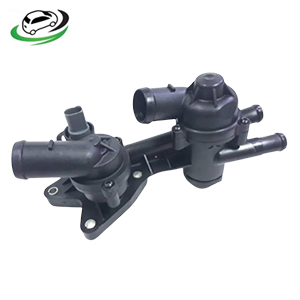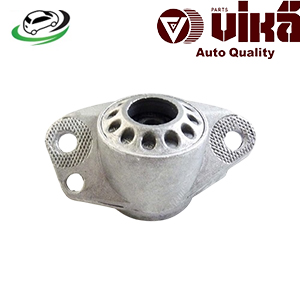Get VW Golf IV-1.8T Front Sway Bar End Link 1J0411315J in Kenya
The sway bar end link, also known as the stabilizer bar link, is a vital component in a vehicle’s suspension system. It connects the sway bar (stabilizer bar) to the suspension, helping to reduce body roll and improve vehicle stability during cornering and over uneven surfaces. Understanding the structure, function, types, benefits, common issues, and maintenance of sway bar end links is essential for ensuring optimal vehicle handling and safety.
Structure and Function of Sway Bar End Links
The sway bar end link acts as a connecting rod between the sway bar and the suspension components, typically the control arm or strut.
Components of a Sway Bar End Link
- Rod or Shaft: The main body of the end link, usually made of metal or composite materials.
- Ball Joints or Bushings: These are located at both ends of the rod, allowing for flexible movement and articulation.
- Mounting Hardware: Bolts, nuts, and washers used to secure the end link to the sway bar and suspension components.
- Dust Boots: Protective covers that prevent dirt and debris from entering the ball joints or bushings.
Function in the Suspension System
The primary function of sway bar end links is to transmit the force from the sway bar to the suspension components, stabilizing the vehicle during turns and over bumps:
- Connecting the Sway Bar: The end link connects the sway bar to the control arm or strut, allowing the sway bar to function effectively.
- Reducing Body Roll: During cornering, the sway bar twists and the end links transfer this force to the suspension, reducing body roll and improving stability.
- Maintaining Wheel Alignment: The end links help keep the wheels aligned with the road surface, enhancing handling and control.
Types of Sway Bar End Links
Sway bar end links come in various types, each designed to suit different vehicle designs and performance requirements.
Standard End Links
Standard end links are typically made of steel and use rubber bushings at both ends. They are common in many production vehicles and provide reliable performance for everyday driving conditions.
Adjustable End Links
Adjustable end links allow for fine-tuning of the sway bar’s effectiveness. They are commonly used in performance and racing applications where precise handling adjustments are needed.
Heavy-Duty End Links
Heavy-duty end links are designed for off-road and high-performance vehicles. They are made of stronger materials, such as thicker steel or composite materials, and often feature reinforced bushings or ball joints.
Spherical End Links
Spherical end links use spherical bearings instead of bushings or standard ball joints. These provide greater flexibility and durability, making them ideal for high-performance and off-road applications.
Benefits of Sway Bar End Links
Sway bar end links offer numerous benefits that enhance vehicle handling, stability, and overall safety.
Improved Handling
By effectively connecting the sway bar to the suspension, end links help reduce body roll during cornering, resulting in more precise and responsive handling.
Increased Stability
Sway bar end links enhance vehicle stability by keeping the wheels in better alignment with the road surface, reducing the risk of oversteer or understeer.
Enhanced Safety
With improved handling and stability, sway bar end links contribute to overall vehicle safety, especially during emergency maneuvers and on uneven road surfaces.
Durability and Longevity
High-quality sway bar end links are designed to withstand the stresses of everyday driving and harsh conditions, ensuring long-lasting performance and reducing the need for frequent replacements.
Common Issues and Maintenance of Sway Bar End Links
Like all mechanical components, sway bar end links can experience wear and tear over time. Regular inspection and maintenance are crucial for ensuring their proper function.
Signs of Worn Sway Bar End Links
- Clunking Noise: A clunking or rattling noise when driving over bumps or during cornering can indicate worn or loose end links.
- Poor Handling: Decreased steering response or increased body roll during cornering can be signs of worn end links.
- Visual Wear: Cracks, splits, or other visible damage to the bushings or ball joints suggest that the end links may need replacement.
- Excessive Play: If the end links have excessive play or movement when checked manually, they may be worn out and need replacement.
Maintenance Tips
- Regular Inspection: Periodically inspect the end links for signs of wear, damage, or looseness.
- Proper Lubrication: Ensure that the ball joints or bushings are properly lubricated to reduce friction and wear.
- Timely Replacement: Replace worn or damaged end links promptly to maintain suspension integrity and vehicle handling.
- Quality Parts: Use high-quality replacement parts to ensure durability and reliable performance.
Advances in Sway Bar End Link Technology
Modern advancements in sway bar end link technology have led to improved performance, durability, and ease of maintenance.
Advanced Materials
The use of advanced materials, such as high-strength steel, aluminum, and composite materials, enhances the strength and durability of sway bar end links. These materials are designed to withstand the stresses of modern driving conditions.
Precision Engineering
Improved manufacturing techniques, such as CNC machining and precision casting, ensure that sway bar end links meet high standards of quality and consistency. This precision results in better performance and reliability.
Enhanced Designs
Innovative designs, such as adjustable and spherical end links, provide greater flexibility and customization for different driving conditions and performance needs. These designs improve handling and allow for fine-tuning of the suspension system.
Follow us on Facebook for more parts.




